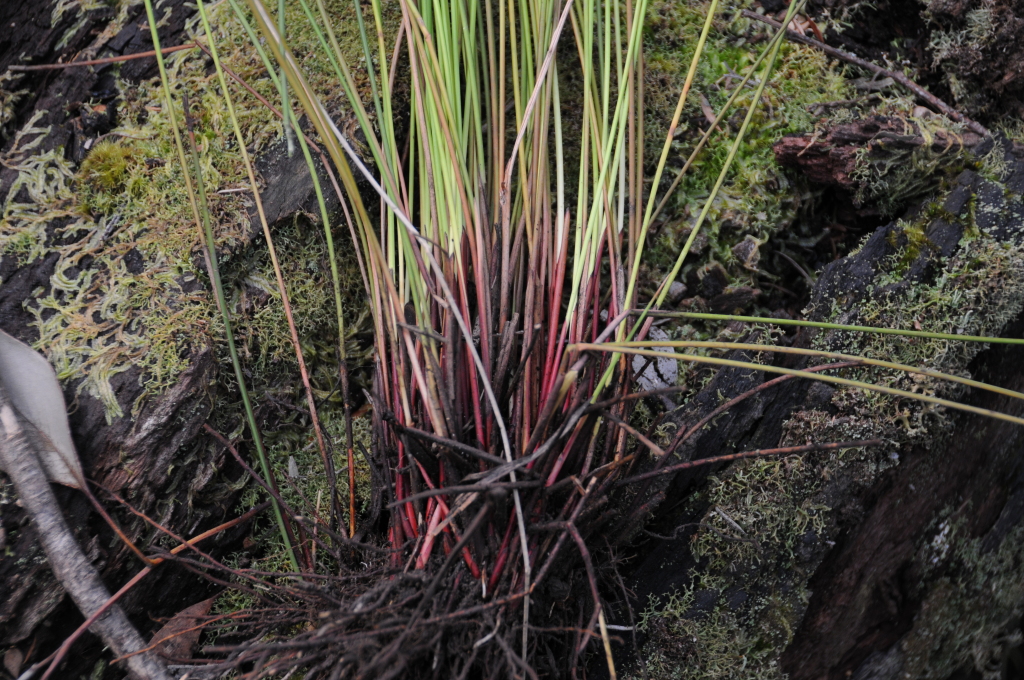Machaerina gunnii
(Hook.f.) J.KernSlender tufted perennial with very short rhizome. Culms slender, rigid, ± terete, nodeless, striate, glabrous, minutely scabrous to smooth, 20–100 cm high, 0.8–1.5 mm diam. Leaves basal; blade culm-like, as long as to slightly exceeding culm, 0.7–1.5 mm diam., or reduced; sheath reddish or straw-coloured (but then usually with reddish tinges), dull. Inflorescence interrupted-oblong in outline, narrow, erect, 4–30 cm (rarely to 60 cm) long, to 1.5 cm diam.; lowest involucral bract much shorter than inflorescence. Spikelets few, 1-flowered, 4.5–8 mm long; glumes 2–4, acute, red-brown to grey-brown, margins glabrous; fertile glumes 4.5–7 mm long. Nut ovoid or globose, ± smooth, minutely hispid or papillose at extreme apex only, ± shining, yellow-brown to black, 2.5–3.6 mm long, 1.3–1.8 mm diam. Flowers spring–summer.
GleP, VVP, GipP, OtP, WaP, CVU, GGr, DunT, NIS, EGL, EGU, WPro, HSF, HNF, OtR, Strz, MonT, HFE, VAlp. Also SA, Qld, NSW, Tas. New Guinea, New Caledonia. Widespread, but seldom common, occurring in wet heathlands and swampy woodlands from near sea-level to the subalps in the eastern ranges.
Wilson, K.L. (1994). Cyperaceae. In: Walsh, N.G.; Entwisle, T.J., Flora of Victoria Vol. 2, Ferns and Allied Plants, Conifers and Monocotyledons, pp. 238–356. Inkata Press, Melbourne.
 Spinning
Spinning

